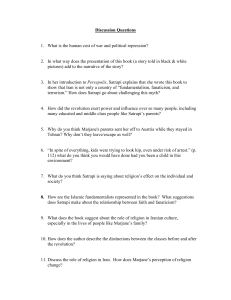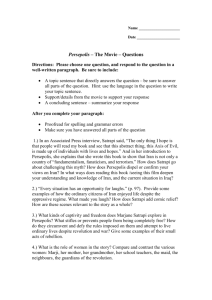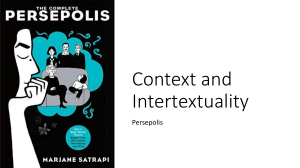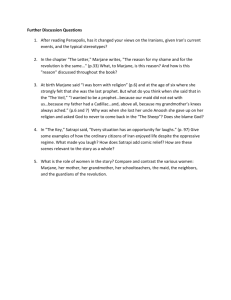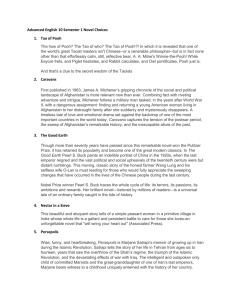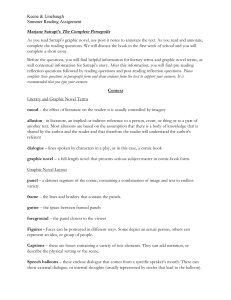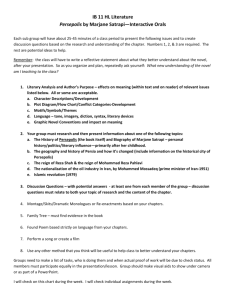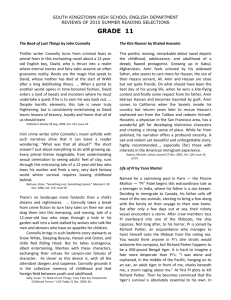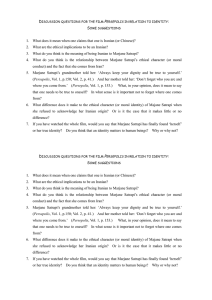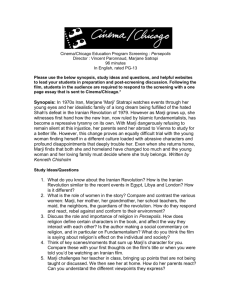Persepolis Discussion Questions: Themes & Analysis
advertisement
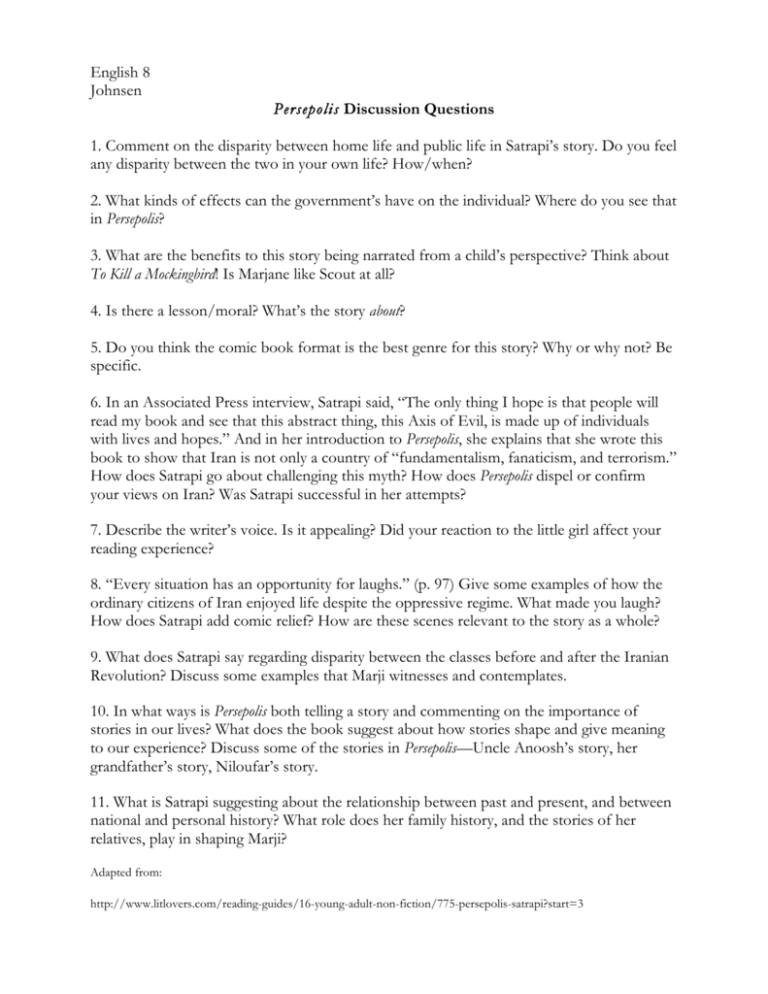
English 8 Johnsen Persepolis Discussion Questions 1. Comment on the disparity between home life and public life in Satrapi’s story. Do you feel any disparity between the two in your own life? How/when? 2. What kinds of effects can the government’s have on the individual? Where do you see that in Persepolis? 3. What are the benefits to this story being narrated from a child’s perspective? Think about To Kill a Mockingbird! Is Marjane like Scout at all? 4. Is there a lesson/moral? What’s the story about? 5. Do you think the comic book format is the best genre for this story? Why or why not? Be specific. 6. In an Associated Press interview, Satrapi said, “The only thing I hope is that people will read my book and see that this abstract thing, this Axis of Evil, is made up of individuals with lives and hopes.” And in her introduction to Persepolis, she explains that she wrote this book to show that Iran is not only a country of “fundamentalism, fanaticism, and terrorism.” How does Satrapi go about challenging this myth? How does Persepolis dispel or confirm your views on Iran? Was Satrapi successful in her attempts? 7. Describe the writer’s voice. Is it appealing? Did your reaction to the little girl affect your reading experience? 8. “Every situation has an opportunity for laughs.” (p. 97) Give some examples of how the ordinary citizens of Iran enjoyed life despite the oppressive regime. What made you laugh? How does Satrapi add comic relief? How are these scenes relevant to the story as a whole? 9. What does Satrapi say regarding disparity between the classes before and after the Iranian Revolution? Discuss some examples that Marji witnesses and contemplates. 10. In what ways is Persepolis both telling a story and commenting on the importance of stories in our lives? What does the book suggest about how stories shape and give meaning to our experience? Discuss some of the stories in Persepolis—Uncle Anoosh’s story, her grandfather’s story, Niloufar’s story. 11. What is Satrapi suggesting about the relationship between past and present, and between national and personal history? What role does her family history, and the stories of her relatives, play in shaping Marji? Adapted from: http://www.litlovers.com/reading-guides/16-young-adult-non-fiction/775-persepolis-satrapi?start=3
